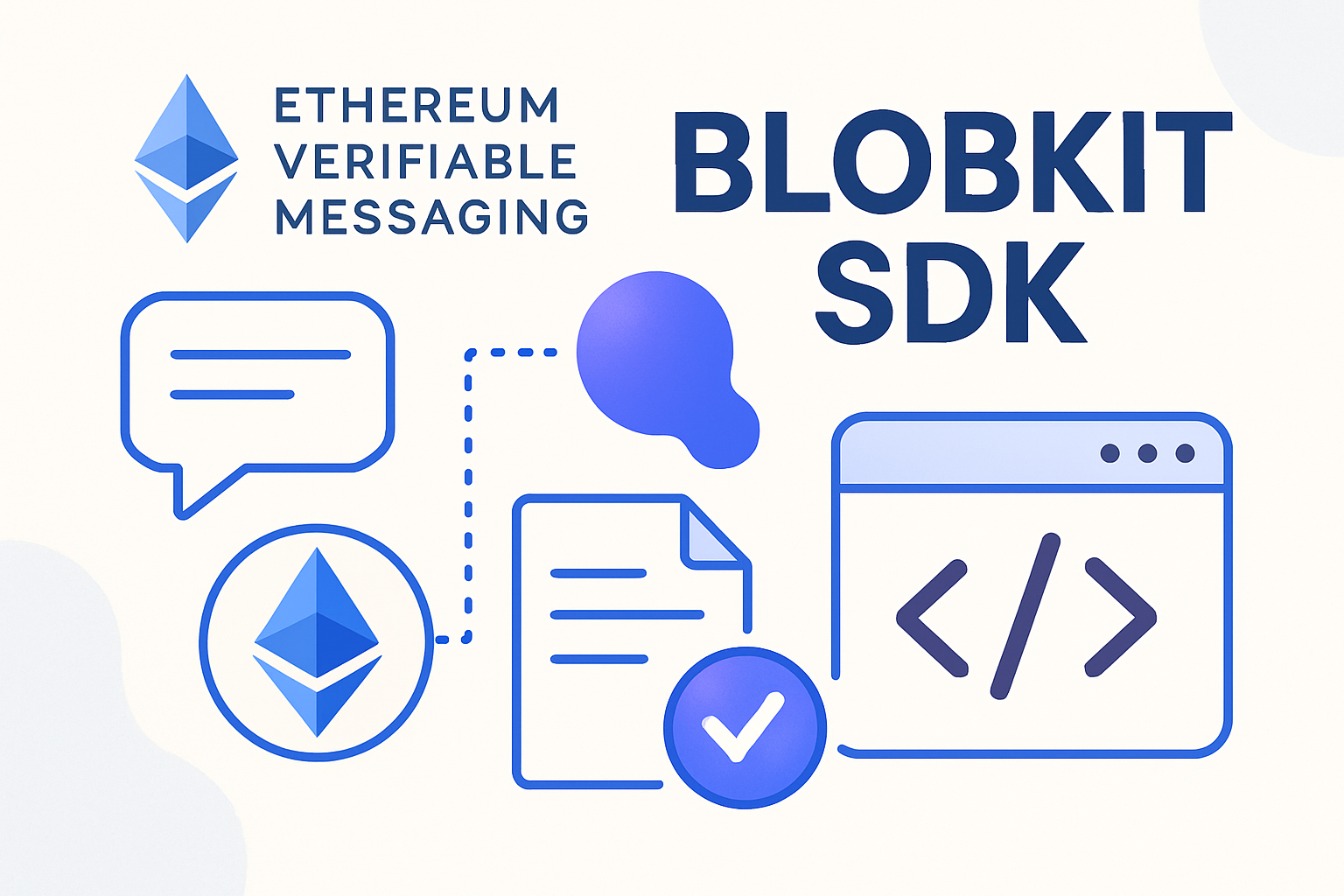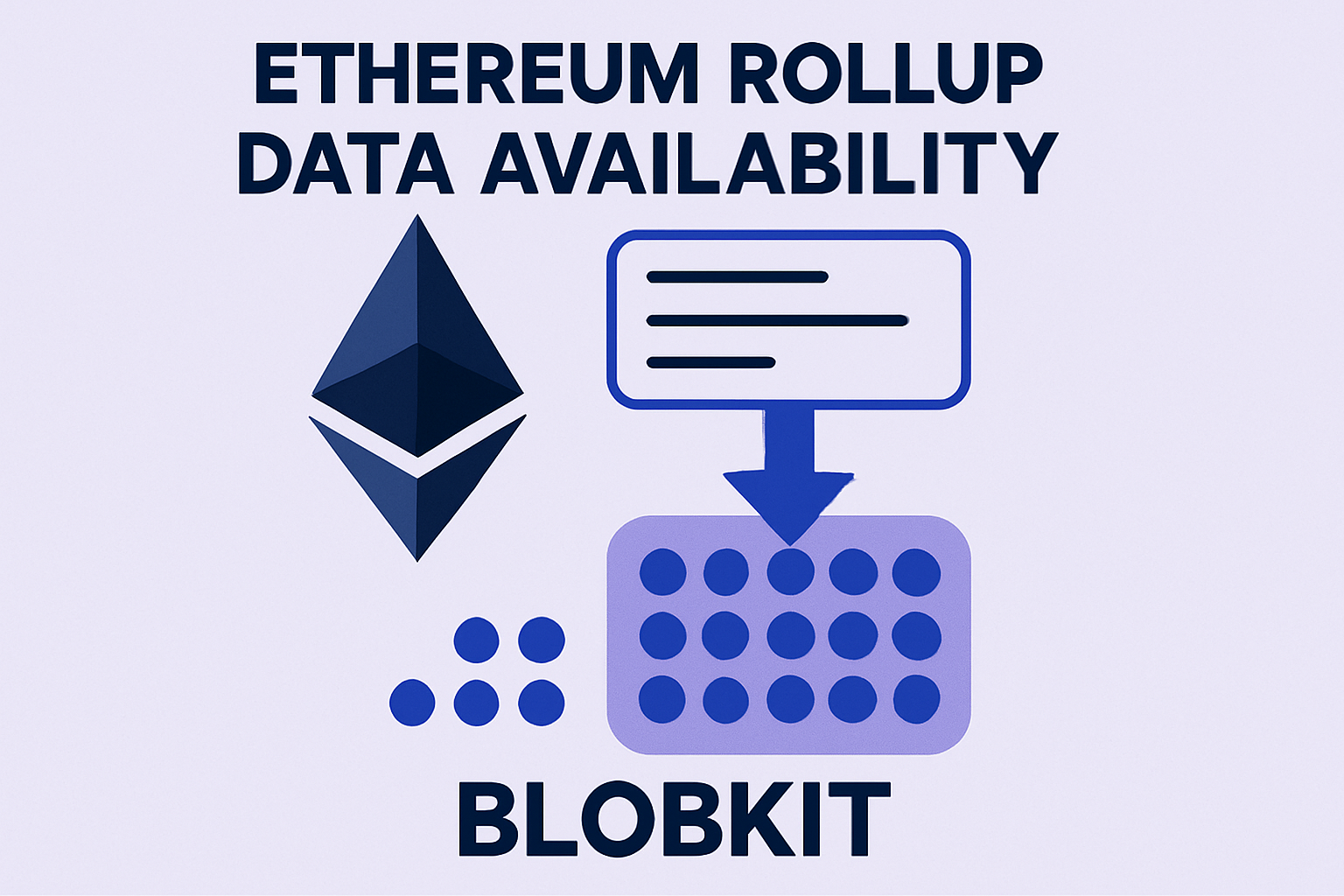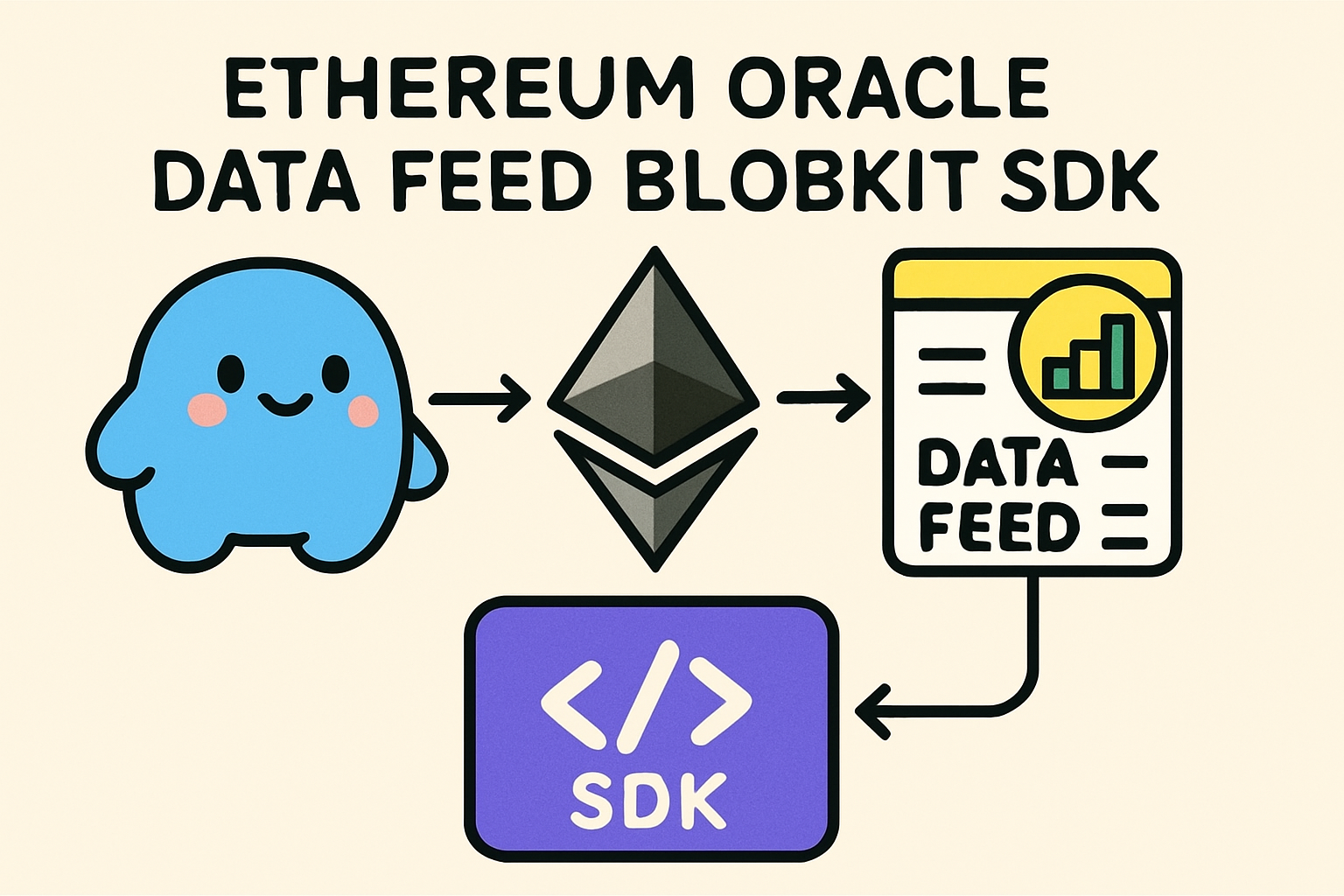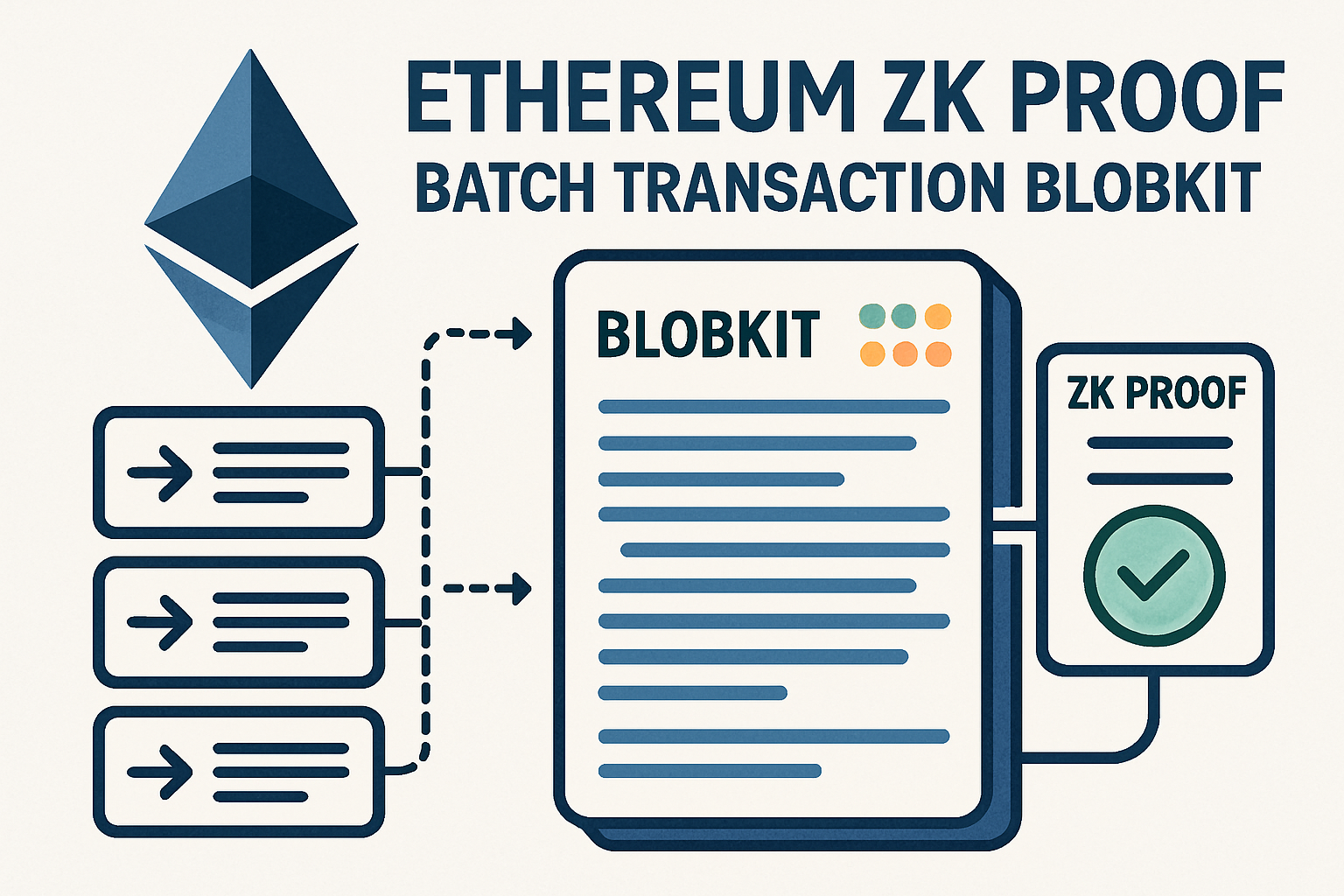
Ethereum’s modular future is here, and at its core is a new primitive: blobspace. With EIP-4844 now live, Ethereum developers can leverage native blob transactions for scalable, low-cost data availability. But until recently, building with blobs was daunting, custom cryptography, non-standard transaction formats, and limited wallet support created friction for even the most seasoned teams.
BlobKit SDK v2 changes this dynamic. Released in August 2025, BlobKit is a TypeScript SDK purpose-built for interacting with Ethereum’s blobspace. It abstracts away protocol complexity and delivers production-grade tools for scalable DA solutions. Whether you’re building rollups, ephemeral games, or verifiable messaging dApps, BlobKit unlocks direct access to Ethereum’s underused blob layer, no custom infrastructure needed.

Why Blobspace Matters for Modular Blockchain Development
Blobs are large packets of data (up to 124 KB each) that can be attached to Ethereum blocks without permanently occupying state storage. Unlike calldata, which is expensive and persists forever, blobs are ephemeral and cost-efficient. At today’s ETH price of $3,891.25, storing a full blob typically costs between $0.01 and $1, enabling new classes of applications that need scalable but temporary data writes.
This paradigm shift is especially relevant for:
- Rollups: Offloading transaction data from L2s to blobspace slashes costs and improves throughput.
- DA layers: Protocols like Celestia can use blobs as an on-chain anchor or bridge between ecosystems.
- dApps needing verifiable but non-permanent storage: Voting systems, ephemeral game states, or off-chain computation proofs all benefit from blobs’ cryptographic guarantees without long-term bloat.
The challenge? Safely encoding data into blobs, generating KZG commitments/proofs, and submitting transactions, all while navigating evolving wallet/RPC support.
BlobKit SDK v2: Making Blob Transactions Accessible
The latest version of the BlobKit SDK addresses these hurdles head-on:
- Proxy Server: Many wallets/clients don’t yet support blobs natively. BlobKit’s built-in proxy server lets apps send blob transactions through a reliable relay layer, no need to wait for ecosystem-wide upgrades.
- Escrow System: To ensure trustless payments for blob writes, the SDK introduces an escrow contract. Users deposit funds linked to jobs; proxies only get paid after successful execution. If the proxy fails or misbehaves, users recover their funds automatically (details here).
- KZG Cryptography Built-In: Developers get seamless access to KZG commitment/proof generation straight from the SDK, no external libraries or complex setup required.
- Error Handling and Protections: Production-grade features like signed request validation, rate limiting, and circuit breakers are included by default.
A Quick Look: Getting Started with BlobKit SDK v2
The onboarding process is straightforward, but requires access to a blob-compatible RPC endpoint (Flashbots RPC or self-hosted node recommended). Once set up, developers can encode arbitrary binary data into blobs using simple TypeScript functions provided by the SDK.
This dramatically lowers the barrier for projects seeking scalable DA without deep protocol expertise or custom infrastructure investment. For more technical details and usage examples visit the official documentation at blobkit.org.
BlobKit’s design is not just about lowering technical barriers – it’s about enabling new economic and architectural models for decentralized applications. By making Ethereum blobspace programmable and cost-efficient, developers can now build systems that were previously infeasible due to calldata cost or complexity. The result: a new wave of data-centric dApps, trust-minimized bridges, and rollup-native protocols that use blobs as their foundational data layer.
Key Use Cases for BlobKit SDK in Ethereum Modular Stack
-

Verifiable Messaging Systems: BlobKit SDK enables secure, cost-efficient transmission of verifiable messages by leveraging Ethereum’s blobspace for temporary data storage with cryptographic guarantees. This is ideal for protocols that require tamper-proof message delivery without permanent on-chain storage.
-

Ephemeral Gaming State Storage: Developers can use BlobKit SDK to store and update transient game states (e.g., multiplayer moves, round data) on Ethereum blobs. This approach offers scalable, low-cost storage for high-frequency updates, benefiting blockchain-based gaming platforms.
-

Scalable Off-Chain Data Availability Layers: BlobKit SDK facilitates the creation of modular data availability layers for rollups and L2s, allowing projects to publish proofs and commitments to Ethereum blobspace, ensuring data can be retrieved and verified efficiently.
-

On-Chain Oracles and Data Feeds: By utilizing BlobKit SDK, oracle providers can broadcast large, time-sensitive data sets (e.g., price feeds, event results) to Ethereum blobs, reducing costs and increasing throughput compared to traditional calldata methods.
-

Batch Transaction and Proof Publishing: BlobKit SDK allows dApps and infrastructure projects to publish batched transactions, ZK proofs, or state roots to Ethereum blobspace, enhancing scalability while minimizing storage costs (with blob transactions costing between $0.01 and $1 for ~124 KB at current rates).
Consider how this changes the economics for rollups. Instead of paying exorbitant fees to post transaction data as calldata, rollup operators can batch transactions into blobs and publish them at a fraction of the cost – typically between $0.01 and $1 per 124 KB, even with ETH trading at $3,891.25. This unlocks higher throughput and enables smaller rollups or appchains to operate sustainably on mainnet security.
Real-World Applications: From Verifiable Messaging to Scalable DA Layers
The impact goes beyond scaling. Projects are already leveraging BlobKit SDK v2 to launch:
- Verifiable off-chain messaging: Securely anchor message batches on Ethereum with cryptographic proofs.
- Ephemeral gaming states: Store fast-updating game logic or scores without permanent state bloat.
- Decentralized storage bridges: Anchor off-chain or cross-chain data in blobs for later verification or retrieval.
- Rollup DA layers: Use blobs as a modular DA substrate for custom L2s or sidechains.
This flexibility is why blobspace is quickly becoming the backbone for next-gen modular blockchain development. With BlobKit handling encoding, commitments, payments, and error recovery, teams can focus on building differentiated features instead of wrestling with protocol edge cases.
Security, Ecosystem Support and What’s Next
The security model behind BlobKit’s escrow-proxy architecture is robust by design. Funds are only released upon confirmed blob inclusion; misbehaving proxies cannot steal user deposits thanks to automated escrow logic (read more here). As more wallets and RPC providers add native blob support over the coming months, expect the integration process to become even more seamless across the stack.
For those building on Celestia or exploring blobspace restaking strategies with EigenLayer, BlobKit offers a practical bridge between Ethereum’s native DA capabilities and emerging modular architectures. The SDK’s extensibility means it can adapt as EIP-4844 matures and as new DA layers emerge in the ecosystem.
The evolution of Ethereum’s data availability layer has only just begun – but with tools like BlobKit SDK v2 now live, developers have everything they need to start building at scale today. For code samples, technical docs, and updates on future releases visit blobkit.org.






